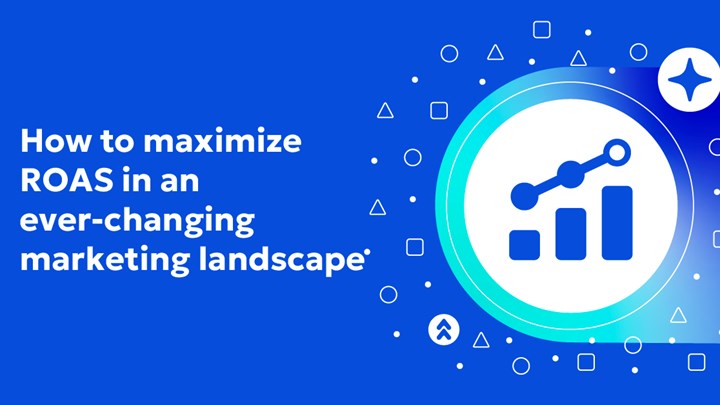How to maximize ROAS in an ever-changing marketing landscape
- By Matthew Bebenek, Solution Engineering at Siteimprove - Dec 22, 2023 Ads Digital marketing Web Analytics
Marketers need to stay competitive, but there’s more to it than just launching campaigns: it's about crafting invincible marketing strategies that drive revenue and awareness despite evolving market influences.
One crucial metric at the heart of this pursuit is ROAS: Return On Ad Spend.
ROAS, or Return On Ad Spend, is a key measurement of the spend efficiency for any marketing tactic. It’s calculated by dividing the revenue generated by a campaign with the total cost spent on the campaign. For instance, if a $1,000 Google Ads campaign yields $2,000 in revenue, the ROAS stands at 2:1 ($2 of revenue generated for every $1 spent).
You might be thinking, “Oh great, one more metric for me to measure,” but this is an especially important one. Measuring ROAS matters for several reasons:
- It helps you better understand the return on investment (ROI) of your marketing efforts.
- It makes it easier to communicate how marketing budgets are being managed.
- When it comes time to cut marketing budgets, ROAS helps you quickly cut the tactics and channels that generate the least amount of revenue.
Ultimately, the goal is transforming the marketing department from a cost center into a revenue-generating powerhouse. As a Solution Engineer specializing in Siteimprove’s analytics capabilities, I’ve worked with customers who hadn’t seriously considered measuring ROAS or just weren’t sure where to start.
Here’s how you can actually make use of ROAS in your team.
Set up shop
Before you get started on defining and measuring your ROAS, ensure you have the proper analytics tracking in place because you need full visibility into all advertising channels.
As part of this process, you’ll need to determine the revenue numbers you want to assign for the various conversions you’re tracking (if you haven’t already done so). For instance, by assessing how many form fills on your site led to an actual paying customer, you can determine how much money a form fill is worth to your company. Now that conversion has monetary value attached to it and you can track and forecast ROI for any given touchpoint on your site.
Once the setup work is done, you’re ready to apply some of the proactive principles below to maximize your ROAS.
Embrace experimentation
A common mistake amongst marketers that experience a plateauing (or worsening) ROAS is sticking with the same strategy for too long.
It has never been easier to experiment with your digital marketing tactics to see which new strategies will result in better performance. A great place to start is with some classic A/B tests to see how different landing pages, bidding strategies, images, keywords, ad copy, etc. end up performing.
If your team exclusively runs brand campaigns, you can try experimenting with moving a campaign a little higher in the funnel and target a new audience. While not all your tests will result in a higher ROAS, you’ll inevitably come across new strategies that do perform.
Analyze current performance and cut unnecessary spend
It’s time to take a good hard look at the performance of your campaigns and dig into the details of the underperformers. Key performance indicators you’ll want to keep an eye on are:
- Clickthrough rate
- Conversion rate
- Cost per conversion
If you’ve already tried experimenting to improve your low-performing campaigns but can’t seem to get your KPIs where you want them, don’t shy away from pausing or even removing keywords or campaigns. That budget would be better spent on campaigns that are giving you a better ROAS.
I advise the customers I work with to make use of Siteimprove Ads, which has tools like a quality score analysis (to help gauge ad relevance and landing page experience) and budget analysis (to help track and optimize spend). This makes it easier to drill down into campaigns or keywords that are underperforming.
Evaluate your website and conversion paths
Let’s take a step back from KPIs and talk about the one thing that affects everything: the user experience.
Your ad campaigns could be as well optimized as possible, driving large numbers of visitors to your site. But if the experience for those visitors is poor, it will impact conversions and you’ll still see a negative ROAS.
Consider how long it takes a user to complete the specific conversions you’re hoping they will take. Are those actions easy for them to find? What could be hindering them along the way?
No one has time to comb through hundreds (and for some of our customers, even thousands!) of web pages to find all the potential roadblocks, so investing in a tool that helps automate efforts is a huge time saver. If you’re not sure what to look for in a tool, make sure you can get a clear picture of website performance, landing page conversion blockers, funnels, behavior maps, and user journeys.
Experiment, analyze, and evaluate behavior, then repeat
Marketers are no stranger to change. Our markets and our users’ needs are in constant flux. That’s why it’s so important to create processes that make room for experimentation: experiment, analyze, evaluate behavior, and repeat. This is the process required to maximize ROAS, be efficient with spend, stay on top of user expectations, and deliver amazing experiences, again and again.
